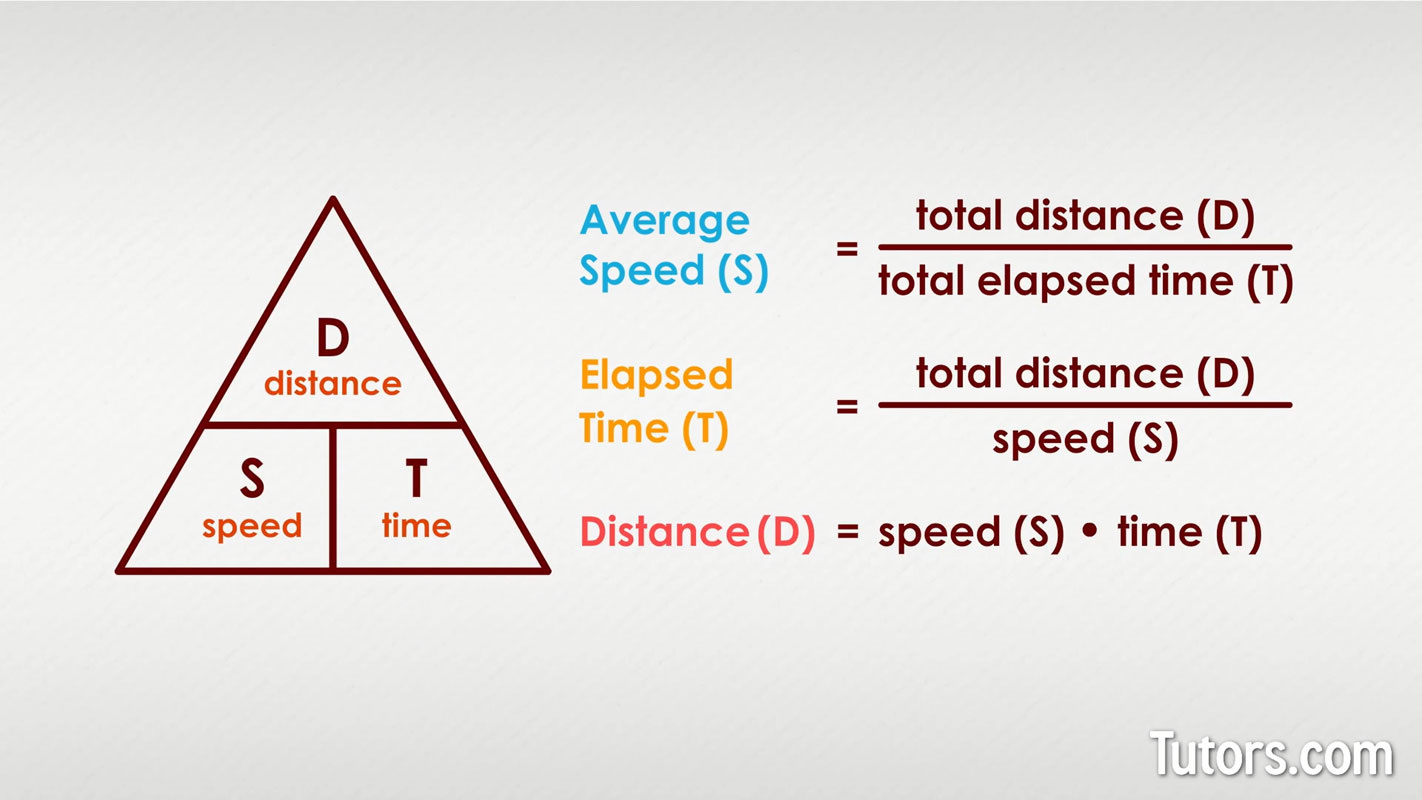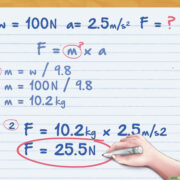In our fast-paced world, the concept of speed touches upon numerous aspects of daily life, from driving a car to downloading a file. Understanding how to calculate speed is not just useful for academic pursuits in physics or engineering – it can have practical applications in everyday life as well. Calculating speed allows us to better understand elements of time management, safety, and efficiency. Whether you’re planning a road trip, interested in athletics, or just curious about the world around you, knowing how to calculate speed can provide valuable insights. Now, let’s explore different methods and concepts that will help demystify the process of calculating speed.

Using the Standard Speed Equation
One of the simplest methods to calculate speed is using the standard speed equation. Speed is a measure of how fast an object is moving and is typically expressed as the distance traveled per unit of time.
Detailed Steps:
- Measure the Distance: Use a ruler, measuring tape, or odometer to determine the distance covered.
- Record the Time: Use a stopwatch or clock to note how long it took to cover that distance.
- Use the Speed Equation: Divide the distance by time (Speed = Distance ÷ Time) to find the speed.
- Convert Units if Necessary: Make sure your units for distance and time are consistent (e.g., meters per second, miles per hour).
Summary:
This method provides a straightforward means to calculate speed, suitable for most everyday situations. However, accuracy depends on precise measurements, and it doesn’t account for variations in speed over the course of the journey.
Tracking Speed with a Speedometer
Vehicles come equipped with a built-in tool to measure speed: the speedometer. This device gives real-time data on how fast you’re traveling.
Detailed Steps:
- Understand Your Speedometer: Locate the speedometer in your vehicle; it’s usually found directly in front of the steering wheel.
- Read the Speed: Watch the needle or digital display which shows your current speed.
- Maintain Consistent Speed: If you need an average speed, try to maintain a steady speed for the best accuracy.
Summary:
Using a speedometer is a convenient and instant way to know your speed. However, it may not be perfectly accurate due to calibration issues or tire wear.
GPS-Based Speed Calculation
Global Positioning System (GPS) devices can calculate your speed by determining how fast you move between different geographical locations.
Detailed Steps:
- Set Up GPS Device: Activate your GPS device and ensure it has a clear view of the sky for the best signal.
- Start Moving: Begin your journey and allow a few minutes for the GPS to acquire satellites and stabilize.
- Read Your Speed: Most GPS devices will display your current speed.
- Review Trip Data: Some devices store speed data, giving you an average speed at the trip’s end.
Summary:
GPS-based speed calculations offer convenience and record-keeping benefits. However, signal loss or inaccuracies can occur in areas with poor reception, like tunnels or dense urban settings.
Mobile Apps for Speed Measurement
Many smartphone apps are designed to calculate speed by using the phone’s built-in GPS.
Detailed Steps:
- Download a Speed Measurement App: Find and install a reputable app from your device’s app store.
- Initiate the App: Open the app and give it necessary permissions to access your device’s GPS.
- Begin Movement: Start your activity, and the app will display your speed in real-time.
- Access Trip Summary: After completing your activity, check the app for average speed and other statistics.
Summary:
Mobile apps offer a user-friendly interface and additional features like route mapping. Keep in mind that they rely on your phone’s GPS accuracy and can drain the battery quickly.
Analog Speed Detectors
An analog speed detector, such as a radar gun, is often used in sports and law enforcement to measure the speed of moving objects.
Detailed Steps:
- Point the Device: Aim the radar gun at the moving object directly.
- Measure the Speed: The gun will display the object’s speed almost instantaneously.
- Record the Data: Note down the speed displayed on the device for future reference.
Summary:
Analog speed detectors are accurate and provide instantaneous results. They are, however, limited by the requirement to be within a line of sight of the moving object.
Estimating Speed by Time-Marking
Marking time between known distance markers on a road can help estimate speed without technology.
Detailed Steps:
- Locate Distance Markers: Identify milestones or road signs indicating the distance.
- Time Your Travel: Use a watch to measure the time it takes to travel between two markers.
- Calculate Speed: Apply the speed formula using your time and the known distance.
Summary:
Time-marking is a quick, no-cost way to estimate speed but is less accurate and relies on the availability of marked distances.
Stopwatch and Track Method
For athletes, using a stopwatch and a measured track is a standard way to calculate running or cycling speed.
Detailed Steps:
- Measure the Track Length: Ensure the length of the track is known.
- Record Time: Use a stopwatch to measure how long it takes to complete the track.
- Calculate Speed: Divide the track length by your recorded time for your speed.
Summary:
This is an accurate method for athletic activities but doesn’t translate well to many real-world scenarios.
Video Analysis
Video recordings can be analyzed to determine the speed of an object moving within the frame.
Detailed Steps:
- Record Video: Capture the moving object on video making sure to include a known distance.
- Analyze Footage: Use video editing software to find the time taken for the object to travel the known distance.
- Calculate Speed: Determine speed using the time and distance.
Summary:
Video analysis can be very accurate but requires technical skills to analyze the footage properly.
Doppler Radar
Doppler radar uses the Doppler effect to measure the speed of objects, particularly in weather forecasting and law enforcement.
Detailed Steps:
- Point the Radar: Direct the Doppler radar towards the moving object.
- Capture the Data: The radar measures changes in the frequency of the returned signal to calculate speed.
- Interpret the Readings: Understand the readout, which often requires specific training.
Summary:
Doppler radar is precise, but the equipment is expensive and requires specialized knowledge to operate.
Using time-lapse photography, one can visually capture the movement of an object over time and calculate its speed.
Detailed Steps:
- Set Up Camera: Mount a camera capable of taking time-lapse photos.
- Choose Interval: Set the camera to take a photo at regular intervals.
- Analyze Images: Count the number of intervals it takes for an object to move a known distance.
- Calculate Speed: Use the number of intervals and the time interval length to calculate the speed.
Summary:
Time-lapse photography provides visual evidence of speed and is particularly useful for slow-moving objects. However, it requires understanding of photo intervals and may not suit high-speed objects.
Conclusion
Calculating speed does not always require complex tools or advanced mathematical formulas. From high-tech GPS devices to the simple use of a stopwatch, various methods can be adapted to your context and needs. Understanding these methods provides the ability to gauge speed with accuracy, enhancing safety, and informing decision making. Whether for professional use, personal interest, or educational purposes, mastering the different ways of calculating speed equips you with a fundamental skill that can be applied in many real-world scenarios.
Now that you’re equipped with these insights, you’re ready to accurately determine speed in nearly any situation life throws your way. Remember, practice makes perfect, so go out there and measure the world in motion!
FAQs
Q: Can I calculate speed if I only know the distance traveled?
A: No, to calculate speed, you need to know both the distance traveled and the time it took to travel that distance.
Q: How accurate are smartphone apps for measuring speed?
A: Smartphone apps can be quite accurate, but their accuracy depends on the phone’s GPS quality and any potential signal interferences.
Q: What units are used to measure speed?
A: Speed can be measured in a variety of units, such as meters per second (m/s), kilometers per hour (km/h), or miles per hour (mph), based on the context and standard units of the region.









